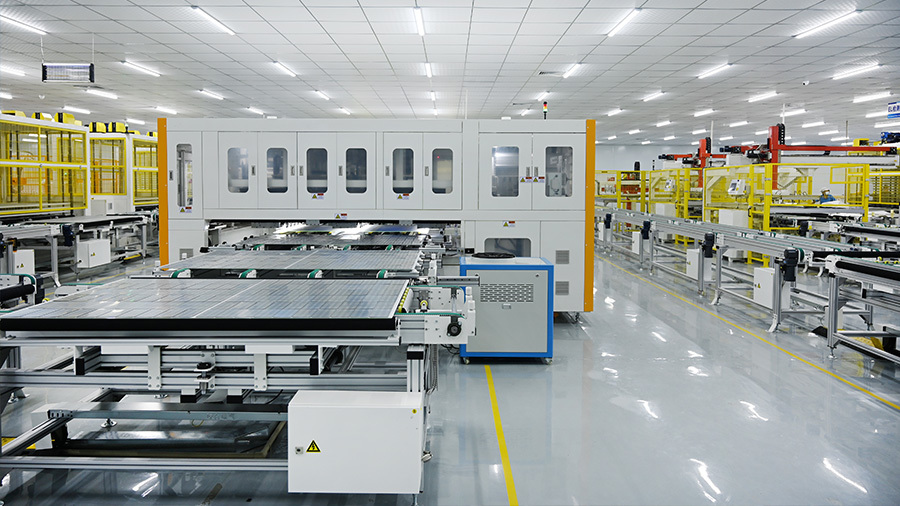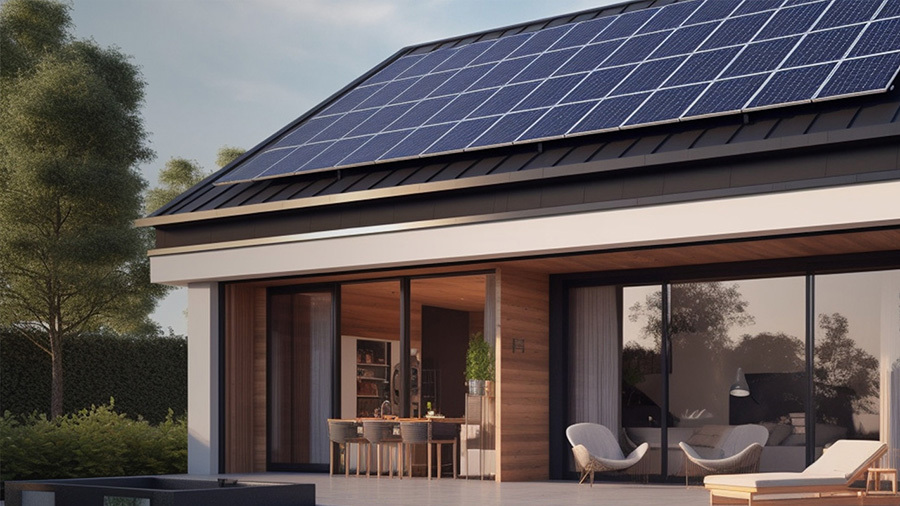News Details
24
2023
-
08
The Ministry of Housing and Construction has issued a series of policies calling for the integrated use of high-efficiency smart photovoltaic buildings
The Fourteenth Five-Year Plan is a critical period for achieving carbon neutrality. In this regard, building energy efficiency and green building development are facing greater challenges, while also ushering in important development opportunities.
The Opinions of the Central Committee of the Communist Party of China and the State Council on the Complete and Accurate Implementation of the New Development Idea and Doing a Good Job of Achieving Carbon Peak and Carbon Neutrality, as well as the Action Programme for Achieving Carbon Peak by 2030, have clarified the requirements for the task of reducing carbon emissions in the field of urban and rural construction. Building carbon emissions are the focus of carbon emissions in the field of urban and rural construction. By improving building energy efficiency standards, implementing energy-saving renovation of existing buildings, optimising the energy-using structure of buildings, and promoting the earliest possible attainment of peak carbon emissions from buildings, we will make a positive contribution to the realisation of China's carbon attainment and carbon neutrality.
On 11 March, the Ministry of Housing and Construction continuously released the "14th Five-Year Plan" for the development of housing and urban-rural construction science and technology and the "14th Five-Year Plan" for the development of building energy efficiency and green building, deploying green and low-carbon development in the field of urban and rural construction. Both plans focus on photovoltaic buildings.
The "14th Five-Year Plan" for the Scientific and Technological Development of Housing and Urban-Rural Construction proposes to carry out research on and application of high-efficiency and intelligent photovoltaic building integration utilisation, the construction of a new type of building electric power system called "light storage, direct and flexible", and building-city-grid energy interaction technologies, and the development of clean energy building efficient utilisation technologies such as urban wind, geothermal, and low-grade waste heat. It will also develop urban wind power, geothermal heat, low-grade waste heat and other clean energy building efficient use of technology.
The "14th Five-Year Plan" for Building Energy Efficiency and Green Building Development encourages the construction of a new type of building power system characterised by "light storage, direct and flexible", and the development of flexible power-using buildings. Among them, "light" is the construction of distributed, integrated solar photovoltaic systems within the building site, "storage" is configured in the power supply and distribution system storage device, "straight" is a low-voltage DC distribution system, "soft" is a low-voltage DC distribution system, "soft" is a low-voltage DC distribution system, and "light" is a low-voltage DC distribution system. system, "flexible" is the building power with adjustable, interruptible characteristics. The new building power system can realise flexible and adjustable power demand, adapt to the access of a large proportion of photovoltaic power generation, and make the building power supply and distribution system simpler and more efficient. During the "14th Five-Year Plan" period, we will actively carry out the pilot construction of new building power system, and gradually improve related policies, technologies, standards, and industrial ecology.
The document on the "14th Five-Year Plan" photovoltaic building development put forward specific objectives: by 2025, the completion of energy-saving renovation of existing buildings more than 350 million square metres, the construction of ultra-low-energy, near-zero-energy buildings more than 0.5 billion square metres, the country's new building solar photovoltaic capacity of more than 0.5 billion kilowatts of installed capacity.
The document requires, according to the solar energy resource conditions, building conditions and energy demand, co-ordination of solar photovoltaic and solar thermal systems building applications, suitable for electricity is electricity, suitable for heat is heat. Promote the integration of solar photovoltaic design, construction and installation of new buildings, and encourage government investment in public welfare buildings to strengthen the application of solar photovoltaic.
Carry out regional-level PV distributed application demonstrations with intelligent PV systems as the core and new technologies such as energy storage and building power demand response as the carrier. Actively promote solar photovoltaic technology in public buildings with stable hot water demand, such as urban hotels, schools and hospitals. In rural areas to actively promote passive solar house and other appropriate technologies.
The document requires that building photovoltaic action. Actively promote solar photovoltaic in urban and rural buildings and municipal utilities in distributed, integrated applications, encourage solar photovoltaic systems and building synchronous design, construction; encourage photovoltaic manufacturing enterprises, investment and operation enterprises, power generation enterprises, building property rights holders to strengthen cooperation, to explore the rooftop leasing, distributed power generation market-oriented trading and other photovoltaic application business model. During the "14th Five-Year Plan" period, the cumulative installed capacity of new building solar photovoltaic 0.5 billion kilowatts, and gradually improve the solar photovoltaic building application policy system, standards system, technology system.
0.5 billion kilowatts (50 million kilowatts) of cumulative new building solar photovoltaic target, seems to be a huge number, but it is likely to be a most conservative target. According to the latest data from the National Energy Board, 29.279 million kilowatts of new grid-connected distributed PV were added in 2021. This is still an achievement in the case of high prices in the upstream and downstream of the PV industry.
This year, the whole county distributed photovoltaic pilot will gradually get better. In the photovoltaic industry upstream and downstream price stabilisation, distributed photovoltaic will achieve what results, let's wait and see.
Previous Page
Previous Page
Guangdong Senyuxin Photovoltaic Material Co., Ltd.

Company Tel: +86-0757-85886606

Mobile: +86-13925543853

Address:
Meihe Industrial Park, Guanyao Dalan Village, Shishan Town, Nanhai District, Foshan City, Guangdong Province

Company Email: admin@syxsolar.com
Copyright©2023 Guangdong Senyuxin Photovoltaic Material Co., Ltd. SEO












